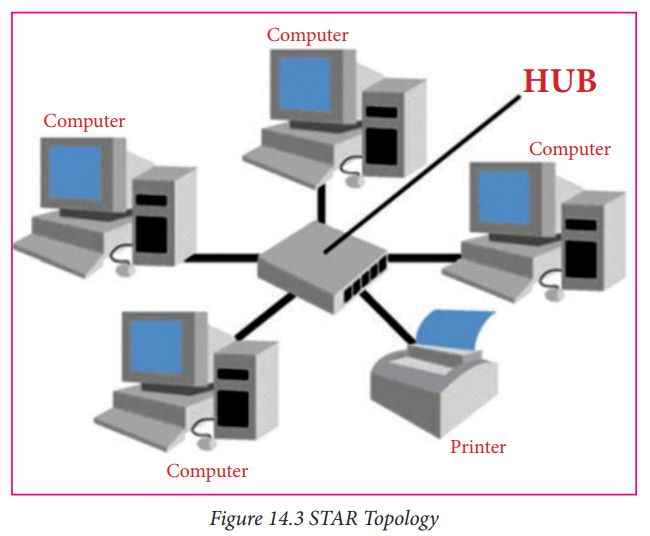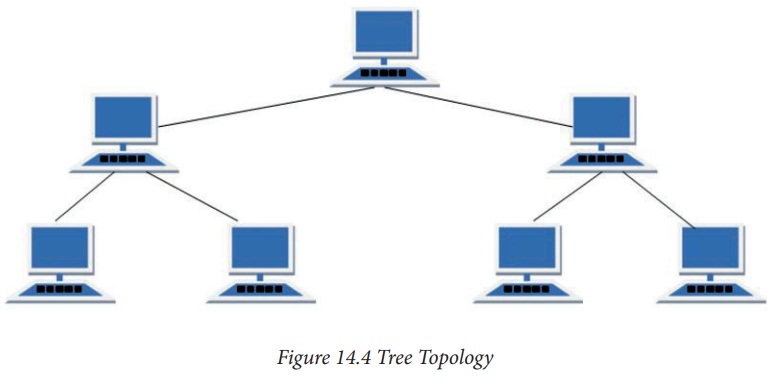Computer Network - Network Topologies | 11th Computer Technology : Chapter 14 : Computer Network
Chapter: 11th Computer Technology : Chapter 14 : Computer Network
Network Topologies
Network
Topologies
Network
Topology is the schematic description of a network arrangement, connecting
various nodes (sender and receiver) through lines of connection.
BUS Topology
Bus
topology is a network type in which every computer and network device is
connected to a single cable. All devices are connected to a common backbone.
Maximum nodes that can be attached are 30.
![]()
![]()
![]()
Features of Bus Topology
1.
It transmits data only in one direction.
2.
Every device is connected to a single cable.

Advantages of Bus Topology
1.
It is cost effective.
2.
Installation of device is easy.
3.
Cable required is least compared to other network topology.
4. Used in small networks.
Disadvantages of Bus Topology
1.
If backbone breaks then whole network fails.
2.
It is difficult to isolate problems due to single cable.
3.
If network traffic is heavy or nodes are more the performance of the network
decreases.
4.
Cable has a limited length.
STAR Topology

In
this type of topology all the computers are connected to a single hub/switch
through a cable. This hub is the central node and all others nodes are
connected to the central node.
Features of Star Topology
1.
In this type, every node has its own dedicated connection to the hub.
2.
The hub acts as a repeater for data flow.
Advantages of Star Topology
1.
The performance is fast with few nodes and low network traffic.
2.
The hub can be upgraded easily.
3.
It is easy to troubleshoot, to setup and modify.
4.
Only the failed node will get affected, and the rest can work smoothly.
Disadvantages of Star Topology
1. If the hub fails then the whole network is stopped because all the nodes depend on the hub.
2.
It requires more cable length.
![]()
![]()
![]()
TREE Topology
This
type of topology is arranged in the form of a tree structure in which top level
contains parent node (root node), which is connected with the child nodes in
the second level of hierarchy. The second level nodes are connected to the
third level nodes, which in turn are connected to the fourth level nodes and so
on. Except the top-level nodes, each level node has a parent node. It is also
called hierarchical topology.

Features of Tree Topology
1.
It is ideal if workstations or nodes are located in groups.
2.
It can be used in Wide Area Network.
![]()
![]()
Advantages of Tree Topology
1.
The expansion of nodes is possible in this type.
2.
It will be easily managed and maintained.
3.
The error detection can be done easily.
Disadvantages of Tree Topology
1.
If more nodes are added maintenance is difficult.
2. If the central hub fails, network fails.
Related Topics